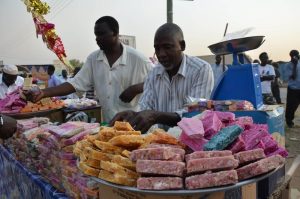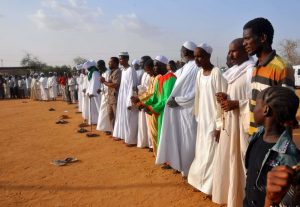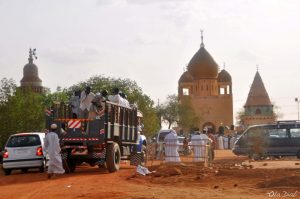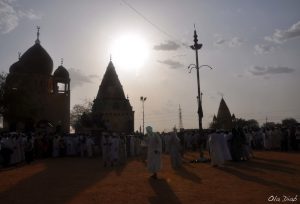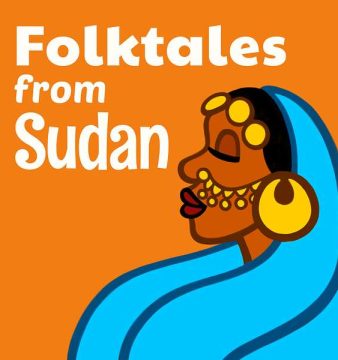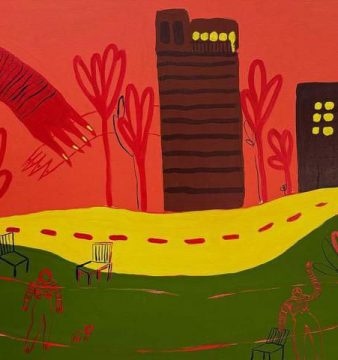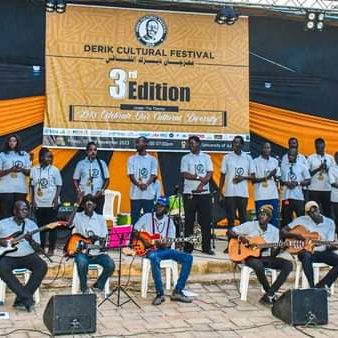Al-Mawlid and the Dancing Dervishes of Sudan
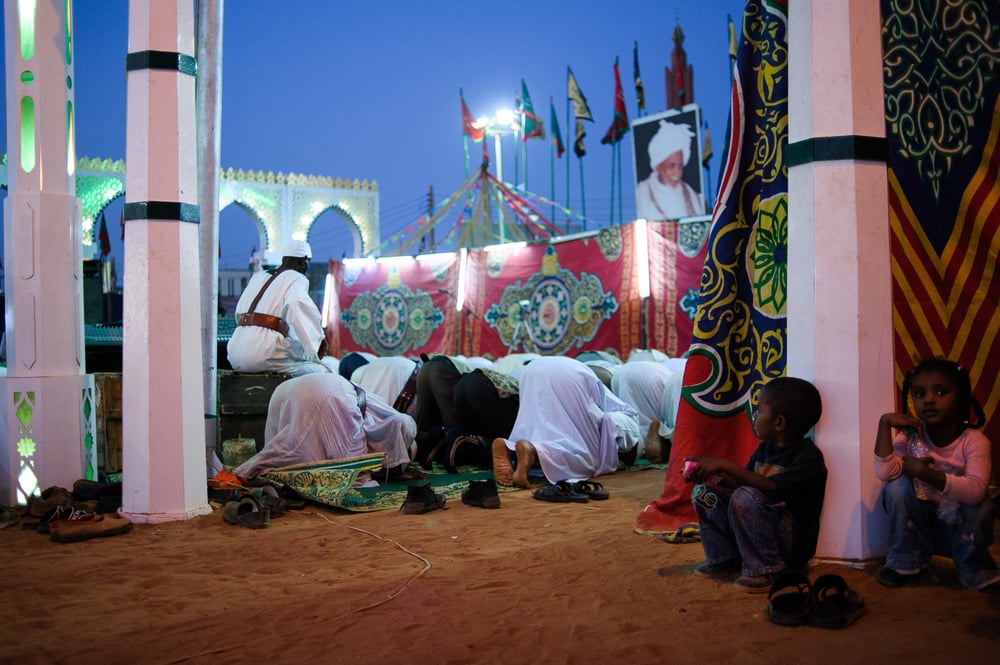
Millions of Muslims from around the world recently observed Al-Mawlid, also known as Mawlid Al Nabi Al Sharif.
Al-Mawlid is the observance of the birthday of Prophet Mohammed (PBUH/SAW), which is commemorated in Rabie Al-Awal, the third month of the Islamic calendar. Sunnis observe Al-Mawlid on 12th Rabie Al-Awal while Shias observe it on 17th Rabie Al-Awal.
Al-Mawlid is recognised as a national holiday in many Muslim countries with the exception to a few who disapprove of its commemoration, believing that Muslims are permitted to celebrate only two Eids: Eid Al Fitr and Eid Al Adha. While observing it might be seen as haram or religiously forbidden by some Muslim scholars and countries, Al-Mawlid is greatly celebrated in many Muslim countries such as Egypt, Morocco, Libya, Iraq, Turkey, Pakistan and Sudan.
In Sudan, it is a national holiday and Sudanese people commemorate the occasion with festivities that can last for more than a week. This year’s Al-Mawlid officially began on 20 November. In Sudan, however, celebrations kicked off approximately 12 days ahead of day of Al-Mawlid and wrapped up on 21 November.
Celebrations includes observers coming congregating in the streets to listen to stories about the prophet, pray, feast, share colourful Al-Mawlid candy and toys, and listen to traditional songs about the prophet and Islam deep into the abyss of the night.
It is during these days that the sheikhs organise Halqat Zikr and madeeh. Not to be confused with zikr, madeeh is an acappella procession performed with local instruments to express praise, love and devotion to Allah and Prophet Mohammed. The celebrations also include educational activities, where religious leaders offer lectures on the prophet’s life and his teachings. In addition, Quran recitations and other religious activities are practiced throughout the duration of the holiday. The celebrations start off with Zafat Al Mawlid, which is a colourful and joyous parade usually performed after asr prayers and it indicates the commencement of festivities.
Families also prepare for the event in their homes and head out with special dishes to celebrations. As with any Eid, children dress in their finest clothes.
While the Sudanese society has maintained its tradition for this religious holiday, it has also evolved with time. Al-Mawlid has become a source of economic fulfilment as much as it is a spiritual one. Every year during Al-Mawlid, the candy accompanies the celebrations and hundreds of vendors get ready for the season and business booms for many of these candy-making vendors. Selling Halawat Al-Mawlid, which means Candy of Al-Mawlid. Delicacies such as Arouset Al-Mawlid, fooliya and simsimiya are popular throughout Sudan, symbolising joy and celebration. Many stores that specialise in these sweets have existed for decades. One of the most popular Halawat Al-Mawlid factories and vendors are in Omdurman, which have been around for almost a century. As they continue to be in demand, these candies have become more elaborate and colourful in the recent years. Nevertheless, like many social events in Sudan whether it be a wedding, political rally or praying ceremony we love a great party filled with dancing, singing and food.
Sufism and the dancing dervishes
Al-Mawlid is the mostly celebrated by Sufis in Sudan and is considered as one of the most important religious events to Sufis in Sudan. During the parade, participants perform religious and mystical songs on drums including Sufi prayers of praise and rythmic madeeh. The height of these celebrations is on the day of the prophet’s birthday and is called ‘Waqfat Al-Mawlid’.
During Al-Mawlid, thousands of sufis come together at mosques such as Hamad El-Nil mosque in Omdurman to engage in the zikr and hear stories about the prophet, pray and dance together.
Religion is an integral component of Sudanese life and culture. Throughout history, Muslims, Christians, Copts, Jews and Animists communities existed in Sudan and have shaped the current political and social framework. The overwhelming majority of Sudanese adhere to the Muslim faith and Islam dominates nearly all aspects of social, political and economic life.
Sudan is heavily influenced by Sufism, a mystical element of Islam which arrived in 6th century. It features tariqas or brotherhoods, which are considered spiritual paths that guide them to a direct knowledge of God, such as the Khatimayah, Tijaniya, Samaniya and Mahadiya, each operating independently and adopting different chants. The Sufi population in Sudan is one the largest national Sufi populations in the world.
There is a saying in Sudan that goes, ‘If there is a family in Sudan that does not have at least one Sufi member, it is not Sudanese’. Regardless of which tariqa one follows, they all share common principles and similar practices with each tariqa having its own sheikh for guidance. In the hierarchy of Sufism, the sheikhs lead groups of Sufis to perform prayers and zikr, as well as offering advice and lecture on social issues. Zikr is an act of devotion in Islam where those that perform it repeatedly chant short phrases or prayers whether silently or loudly.
Hamad El-Nil mosque in Omdurman is famous for these gatherings, especially on Fridays. It is also the site of the tomb of Sheikh Hamad El-Nil, a well-known Sufi leader from the 19th century. Every Friday, a myriad of Sufi men come together to the mosque, standing in long lines facing each other chanting and dancing into a frenzy until their minds and bodies are elevated into a spiritual trance of worship. This type of worship not only requires mental and spiritual strength but also a physical strength as the zikr fuses chanting, meditation, twirling, and jumping that can last for up to six hours. In the summers, this becomes more strenuous on the individual when performed on the scorching desert sun which can reach temperatures of more than 40°C.
Sufi dervishes distinguish themselves and their beliefs through their attire. A common sight in Omdurman on Fridays is a sea of green and red made visible by the dancers patched emerald-green robes and ruby-red beads draped around their necks. Tolerance in Sufism allows for the drumming sounds that add a vibrant detail of excitement and festivity to everyday prayer. As the day becomes night, the cadences of ‘La Ilaha Illa Allah‘ became more and more hypnotic, causing dancers to twirl until falling to the ground.
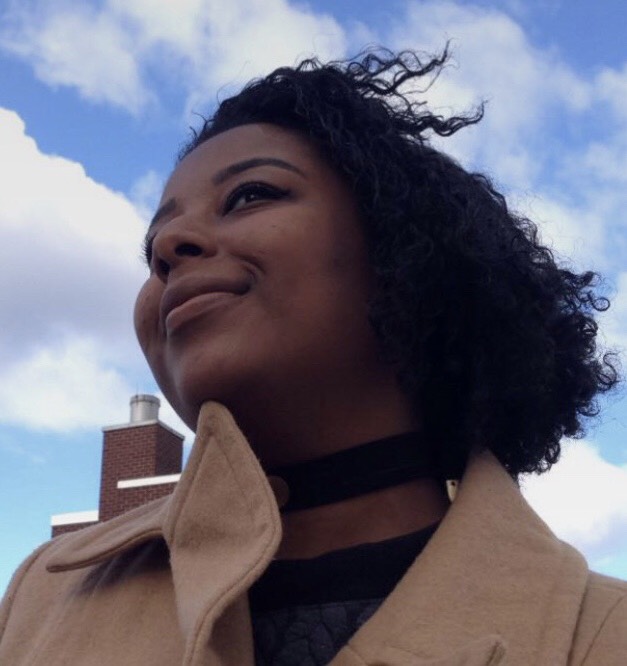 An aspiring peacemaker, Yousra Khalil graduated with an M.A. in International Affairs with a concentration in peace and conflict resolution from the George Washington University. When she’s not working on countering violent extremism, she enjoys trivia, naps, travelling, memes, and good food. Currently based in Washington, DC, Yousra splits her time between the US, Qatar and Sudan.
An aspiring peacemaker, Yousra Khalil graduated with an M.A. in International Affairs with a concentration in peace and conflict resolution from the George Washington University. When she’s not working on countering violent extremism, she enjoys trivia, naps, travelling, memes, and good food. Currently based in Washington, DC, Yousra splits her time between the US, Qatar and Sudan.

